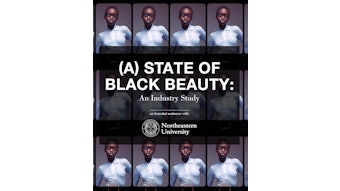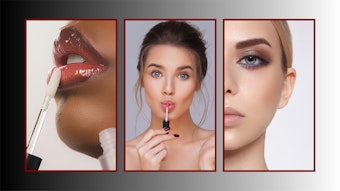
Mazur Group’s Beauty Biz Roundtable 15 (BBR15), a biannual event featuring talks from industry leaders, recently took place at the Le Méridien Delfina Santa Monica Hotel. The event presented marketing and business insights for attendees who hailed from large, small and emerging brands, including Ipsy, Sephora, Goop, Dollar Shave Club, Dermstore and Sexy Hair Concepts.
“When the beauty community is given the opportunity to come together in a forum with an equal playing field, the ideas that are sparked—from marketing innovations to essential steps when scaling the business—are incredible,” said Frances Mazur, CEO of Mazur Group.
During one presentation, Vincent Hsu, business development manager for Perfect365, discussed trends for millennials technology. Hsu noted that:
- 94 percent of millennials buy makeup on their phones
- More than 70% want to try on makeup virtually
BBR15’s other talks included insights into brand-building, social responsibility, content marketing, influencers, ecommerce and more. Below are a selection of highlights.
How Dollar Shave Club Continues to Disrupt Men’s Grooming
When Dollar Shave Club (DSC) was acquired by Unilever in June of 2016 for $1 billion in cash, it gave the multinational giant a foothold in men’s grooming and direct-to-consumer subscription services, while simultaneously shaking up the larger shaving and grooming sector.
The company was founded in 2011 by Michael Dubin, but the brand really took off when, on March 6, 2012, DSC uploaded a YouTube video entitled “Our Blades Are F***ing Great,” which featured Dubin offering a funny viewpoint on everything that was wrong with the shaving category and how DSC offered a solution.
The ad has become a modern classic in viral marketing and has contributed to the brand’s reputation as a category disruptor. The foundational DSC video promised overwhelmed and confused male shoppers that the company wasn’t going to fleece its consumers with overpriced blades, an idea that has forced top competitors to lower their prices and launch their own subscription-based models.
DSC focuses on problem-solving and clearly explains the purpose of its ingredients.
Men’s grooming, which has always been a slow-moving market plagued by consumers who lack confidence in product differentiation and quality, have long been confronted by a lackluster department store, drugstore and big box retail experience, particularly when it came to understanding why one product was better than another, or even why certain grooming products were necessary in the first place.
While there’s room for aspirational marketing in male grooming, DSC has shown that truthful, transparent consumer communication can upend existing norms. And, once the male consumer becomes more engaged and educated, it is likely he will begin seeking out increasingly sophisticated products and ingredients.
At DSC, it’s all about the member, according to Fadi Mourad, the company’s chief innovation officer, product. DSC has more than 3 million subscribers in the United States alone. Mourad, who has a chemistry background and previously held roles at beauty companies such as Estée Lauder, notes that DSC drives product development based on subscriber feedback generated by surveys and other research.
The company tests out its product concepts with trained expert panels that assess everything from product texture to packaging, to the fragrance to the final product.
DSC’s subscribers shower for two reasons: to wake up at the start of a new day or to destress and relax when the day’s over.
Because DSC is a problem-solution brand, Mourad has little interest in chasing emerging and faddish product claims. Instead, he and his colleagues identify subscribers’ pain points, frustrations and unmet needs.
The product development teams then set about creating products that meet all of the subscribers’ requirements. In the brand’s marketing, DSC focuses on problem-solving and clearly explains the purpose of its ingredients. For instance, DSC’s shower line, Wanderer, explains: “Wanderer’s sulfate-free formulas gently cleanse while protecting your skin’s natural moisture.”
Mourad says that DSC’s subscribers shower for two reasons: to wake up at the start of a new day or to destress and relax when the day’s over. As a result, DSC crafted the Wanderer range to include an Awakening scent, comprising mint and cedarwood, and a Calming scent, comprising amber and lavender.
Early product prototypes were shown to DSC’s testers, which yielded the insight that men, whether using the bars soap or body wash format, used a loofah to bathe. The problem? Men tended not to replenish their loofahs and thus were cleaning themselves with bacteria-infested tools. (If you want all the gory details, just read DSC’s original online content, “What Else Are You Sharing When You Share a Loofah?”)
The second iteration of the Wanderer loofah, which was retooled and launched within six weeks, was sent to every customer that had received the lackluster version, free of charge.
As a result, DSC quickly developed a shower tool to accompany the Wanderer series. The result was a loofah that was too small and could not be worn as a glove, which the users preferred. It simply didn’t work.
Because of its subscriber and product development models, DSC is able to create and launch products faster and to respond to consumer needs and feedback more quickly than its traditional personal care counterparts.
DSC’s small team and unified operational guidelines allow it to get products to market in about six months for a relatively low cost and with a greater degree of market confidence. In addition, the subscriber model allows DSC to avoid retailer timelines and constrictions.
DSC appears to have no plans to change the way it services or learns from its subscribers.
When things go wrong, as they did with the Wanderer loofah, DSC quickly owns up to the issue and responds with an apology and revamped product. The second iteration of the Wanderer loofah, which was retooled and launched within six weeks, was sent to every customer that had received the lackluster version, free of charge.
Mourad noted that the mini crises built respect and credibility among customers, as well as positive brand awareness.
DSC’s agility will allow it to grow well beyond the core blade business. Today, beyond body wash, the company offers the Dr. Carver’s line of shaving products, including Easy Shave Butter and Mandatory Prep Scrub; the Boogie's line of styling products, including Smart Hair Paste and Casual Hair Clay; the Big Cloud line of skin defense products, including Wind Master Lip Balm, Daily Face Moisturizer with SPF 25 and Good Shake Hand Cream; and One Wipe Charlies, flushable moist wipes which contain aloe vera and chamomile.
The company will also explore new subscriptions, including starter kits for wives to purchase for their husbands. DSC appears to have no plans to change the way it services or learns from its subscribers.
Goop: Content-powered Beauty
As a brand, Goop is all about making every choice count. The lifestyle brand, founded by its namesake, actress Gwyneth Paltrow, has captured the zeitgeist since its founding as a newsletter in 2008 by embracing consumers’ increasing desire for meaningful lives.
These women, who tend to live in urban centers, usually work, are busy and interested in wellness, and earn roughly $100,000 or more each year. By focusing on these shoppers, Goop has become a leader in cutting-edge wellness and clean beauty, elevating the visibility of its own brand, as well as those of like-minded players such as French Girl and Beauty Chef.
Goop’s contextual commerce has offered readers opportunities to learn about and purchase so-called clean beauty swaps, non-toxic sun tanners and non-toxic deodorants.
One thing hasn’t changed in nine years. Goop’s twin secret weapons remain its high-profile founder and its content, which help drive product launches and ongoing ecommerce. The brand’s beauty content and product mix are overseen by beauty director Jean Godfrey-June, who previously served a similar role with Lucky. In her official Goop profile, Godfrey-June says, “I love the Goop clean-beauty position and I hope to be part of the change—gorgeous beauty products should not have to be toxic!”
During a presentation at the latest BBR event, Blair Lawson, Goop’s head merchant, explained that Goop has established itself as a destination for clean beauty products and content because shoppers want to consumer content and products at the same time.
Goop’s contextual commerce has offered readers opportunities to learn about and purchase so-called clean beauty swaps, non-toxic sun tanners and non-toxic deodorants. It has also pushed the envelope, as with its popular article, “Better Sex: Jade Eggs for Your Yoni.” (Just Google it for more details.)
Goop by Juice Beauty products, launched at the beginning of 2016, are 70% organic, or more, and have been accompanied by the release of a book, “Goop Clean Beauty.” The product range includes a Revitalizing Day Moisturizer ($100), Replenishing Night Cream ($140), Perfecting Eye Cream ($90) and Luminous Melting Cleanser ($90).
“Whether it's through health, fitness, or food, or whatever is manageable through your day, integrating self-care should be easy!"
Goop has also introduced its own fragrances, including Eau de Parfum: Edition 01—Winter ($165), “a perfume of cypress smoke, snow, sensual quiet,” and the latest introduction, Shiso Edition 02 ($165), which comprises shiso leaf extract, oakmoss extract and Bulnesia sarmientoi wood oil. The new scent’s components (all ingredients are listed on the website) are touted to “manifest sexual attraction and relationships,” “alleviate colds/chill and rejuvenate skin,” and “alleviate emotional emergencies and release past wounds and trauma.” This mix of “woo woo” spirituality and clean functionality are a signature of the Goop brand.
Goop’s retail strategy reflects its unique position in the market. The company recently executed a brand activation for Edition 02, Shiso in New York that featured samples of the spicy green fragrance and offered psychic readings. Goop has also partnered with Nordstrom to curate a component of the retailer’s Pop-In@Nordstrom store-within-a-store program from May 12 to June 25. The pop-up shops, which have been established in Seattle, Dallas, Chicago, Los Angeles, Vancouver, Canada, and elsewhere, offer a mix of products across wellness-oriented categories, including beauty. The program allows Goop to make its digital presence more tangible.
The brand has also expanded into the vitamin space, with curated packets offering energy or post-natal replenishment.
“They [Goop] have a way of conveying wellness concepts so they are not only easy to understand, but also adopt and make a habit into a ritual,” said Olivia Kim, vice president of creative projects at Nordstrom. “Whether it's through health, fitness, or food, or whatever is manageable through your day, integrating self-care should be easy!"
Paltrow added, "Our pop-ups have been an incredible opportunity to really connect with our readers and shoppers across the country—this partnership with Nordstrom allows us to provide that experience on a heightened level of scale, touching new markets and shoppers in the process.”
Goop balances third-party and in-house products to ensure neutrality and authenticity.
Goop currently ships only to the continental United States, but Lawson indicated this will eventually change as interest in the Goop brand has gone global. The brand has also expanded into the vitamin space, with curated packets offering energy or post-natal replenishment.
Looking ahead, Goop is producing more skin care products and is hosting its debut wellness summit in Los Angeles in June. And, while about 25 physical stores around the United States currently carry Goop products, the company is working to launch its own retail store in the not too distant future. Goop is entering the omnichannel.
Lawson noted that Goop balances third-party and in-house products to ensure neutrality and authenticity. The brand engages in advertising partnerships with outside brands as part of its ecommerce business, but Goop’s team will not integrate any brands into the company’s shops if they are deemed non-clean beauty. Goop also doesn’t launch or introduce any product without the buy-in of the content team.
How to Get Your Brand on the Shelf: Lessons from a Beauty Buyer
Beauty and personal care buyers want three things:
- A product that’s different
- Clear benefits and effective packaging
- A well-aligned price
But that’s just the start. Jessica Chung, director of merchandising at Target-owned Dermstore, shared these insights during a BBR roundtable discussion. Chung spent her career merchandizing products such as appliances for retailers including Target.
Today, she handles digital merchandising for Dermstore, which boasts the tagline “Shop Hard to Find Skin Care.” Chung noted that merchandising principles are essentially universal and can be translated to any category. Here’s a quick breakdown of what a retailer is looking for:
1. A great product with a great story.
Chung noted that buyers are product junkies, but that they’ve seen virtually everything. That’s why it’s incumbent upon brands to clearly explain why their products are different and how they fit into the retailer’s assortment. This is why brands should always shop the prospective retailer’s brick and mortar stores to fully understand what’s in and around the space you want to occupy. Finally, when you do make your pitch make sure it’s impactful and short.
Have a marketing program laid out for the meeting.
2. An aligned strategy.
Chung encourages brands to understand their buyer and the buyer’s goals—especially whether they will expect you to be exclusive to their channel. Understand the context:
- Does your product fill a gap in the retailer’s offerings?
- Will it help the retailer keep the shopper in the store longer?
- Will it cannibalize sales of existing products or drive incremental sales?
- Can you make the case that your products can drive growth at the retailer or provide them with a point of difference?
- How will carrying your products make the buyer look good?
- What margin are they expecting?
Buyer knowledge will allow you to craft a merchandising strategy that is unique to each retailer. This will show that you’ve done your homework and are thinking of the interests of your retail partners. At the end of the day, the buyer will want to feel that his or her financial goals and merchandising objectives will be fulfilled by the brand.
3. Readiness to execute.
Have a marketing program laid out for the meeting. Show the buyer that you’re ready to activate the retail partnership, that you can generate brand awareness and can direct consumers to purchase products at the buyers’ stores. Be prepared to coordinate marketing with retailer promotions to maximize impact.
Chung warned that marketing plans are a must because simply being on the shelf is not enough to generate success. And the retailer will not do the work for you. Brands should leverage all the tools they can manage, including proximity marketing, social media, influencer marketing, etc.
In addition, she said that brands should have a strategy for going off price within certain limits, especially in categories such as skin care. Brands should also be aware of the retailer’s discount calendar to ensure discount offers don’t pile up. Finally, brands should consider whether they will be able to offer consumer enticements such as gift-with-purchase.
Keeping front of mind means following up on questions that were raised in the meeting, sending quarterly updates on your business, or even sharing relevant information such as market research or other insights that make you look like a useful knowledge partner.
4. Reliability.
Do you have your finances set to fulfill orders? Have you selected reliable vendors? Will you be able to deliver the right order on time? The answers had better be “yes,” but Chung warned against overcommitting during a buyer meeting. The fees for late or damaged deliveries are significant, not to mention the damage that will be done to your credibility.
5. Sales potential.
Do you have a clear statement on the product positioning, a sales history that can point to recent and long-term growth? What are your projected sales?
6. The right partnership personality.
Buyers are busy and have little patience for products that don’t sell. So make sure you’re the type of partner they like working with. Be sure you’re an expert in your category, are solution-oriented and a good communicator, and that you understand the retail and brand business. Buyers like to work with brands and people that are a value-add, said Chung. So make your collaboration easy and as brief as possible. If you can, give them back some of their time.
And, especially when working with a top retailer like Ulta, Walmart or Target, you may want to bring in a sales rep for your brand. These professionals have existing retailer relationships, which means they’ve already established trust, which can get you a meeting.
Go Slow
Chung offered a word to the wise: scale up slowly. Big retailers like Target, which has about 1,800 stores, are too large to offer one-size-fits-all product mixes. As a result, it’s important that brands have a segmented approach that focuses on only the most effective doors. If your brand does go chain-wide at a top retailer, said Chung, you’d better have a solid strategy behind doing so.
Chung also noted that big retailers are particularly slow to bring on new brands. As such, you must be patient following a buyer meeting. Keeping front of mind means following up on questions that were raised in the meeting, sending quarterly updates on your business, or even sharing relevant information such as market research or other insights that make you look like a useful knowledge partner. Whatever you do, don’t become a pest.










